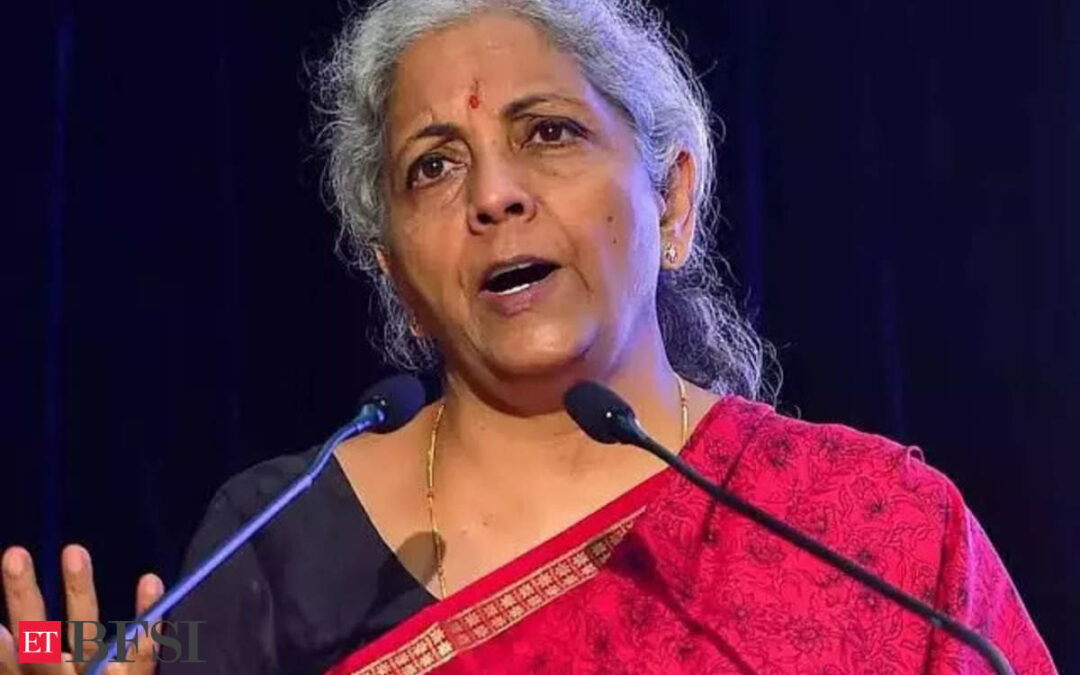Economists across the board emphasise the necessity of fiscal discipline without stifling growth.
From leveraging RBI dividends to boosting capex while ensuring efficient spending, to increasing private consumption, the aim is to foster sustainable growth.
Trimming the Fiscal Deficit: What is the State of Play?
While reducing the fiscal deficit remains a universal appeal, ETCFO seeks into what the government’s plan should be in achieving the 4.5 percent target for FY26.
The glide path to 4.5 per cent by FY26 should be followed by the projection for the next 3 years so that we get back to the 3 per cent fiscal deficit level. If this is held sacrosanct, then the expenditures can be dovetailed to revenue growthMadan Sabnavis, Chief Economist, Bank of Baroda, told ETCFO
If additional revenue is obtained through RBI surplus or disinvestment, it can be allocated to government priorities, maintaining discipline without compromising growth, he added.Speaking on the stronger-than-expected fiscal position due to higher cash balances and reduced borrowing needs, Madhavi Arora, Lead Economist at Emkay Global Financial Services, said, “The fiscal deficit target is unlikely to be higher than the interim at 5.1% of GDP and may be slightly lower. The policy direction may remain largely similar, focusing on credible and clearly communicated consolidation, anchored on stronger revenue mobilization and spending efficiency, even though the spending proportion of revenue expenditure may be higher than the interim budget.”
Fiscal deficit management could benefit from higher cash balances, reduced short-term borrowing, and efficient use of non-market sources of funding. These factors together can positively contribute to managing and potentially reducing the fiscal deficit.
The end-March 2024 cash balance is estimated to have been a high of Rs1.75tn, versus sub Rs300bn budgeted, as the Centre did not foresee the fall in GFD/GDP in 4QFY24 (led by slower spending) versus revised estimates and yet continued to borrow in 4QFY24. This bonanza now rolls over to the current fiscal year FY25, said Madhavi Arora.
Higher-than-expected dividends from the Reserve Bank of India and robust tax collections amid strong economic growth should support the process of fiscal consolidation without hurting growth. The focus on capex even as fiscal consolidation is pursued should bring durability to growth in the medium term.Dipti Deshpande, Principal Economist, CRISIL Limited
Viksit Bharat by 2047The ambitious idea of making India a developed nation by 2047, also the year when our country completes 100 years of independence, aims to elevate India to the third-largest economy in the world from its current position as the fifth-largest economy. Post-general elections, we contemplate what could be next on the government’s plan to amplify this goal.
“We must be moderate on the capex of the government, and a growth of 8-10 per cent in capex can be expected. We must remember that most of the capex is in defense, roads, and railways. The capacity of the government to implement these projects is also important,” noted Madan Sabnavis of Bank of Baroda.
The current path looks good, with Rs 1 lakh crore allocated to states to fulfill their priorities, he affirmed.
In concurrence with Madan Sabnavis, Madhavi Arora remarked, “Capex allocation can see a slightly higher number, possibly 3.5 percent of GDP.”
Revenue Expenditure has a higher Multiplier Effect than Tax Cuts
The narrow taxpayer base need not be retold, but the government should address this, and taxpayers have unsaid expectations for some tax relief.
Madhavi Arora of Emkay Global Financial Services said, “Some adjustments in the tax slabs can be expected to provide tax relief to the lower strata in terms of disposable income.”
At the same time, revenue expenditure has a higher multiplier effect than tax cuts. A large part of the RBI dividend will go towards increasing revenue expenditure, she added.
What could be in store for ailing Private Investment?
India’s attractiveness to foreign investors depends on factors such as policy stability, economic growth prospects, corporate performance, inclusion in global indices, ease of doing business, and global economic conditions.
“Foreign investors come because they believe in the growth story. GIFT City is an enabler. As long as policies are furthering growth and the fiscal numbers look realistic, there will be confidence in the story,” expressed Madan Sabnavis.
In this context, the performance of companies is also important for FPIs. Inclusion in global bond indices will continue to play a leading role in attracting FPIs.
For FDI, we need to consider the ease of doing business at the state level, and there needs to be sufficient investible funds globally. The recent slowdown is also due to investors focusing on developed markets trying to kickstart growth and investment in their home territories, he further added.
Private consumption and investment are endogenous to each other; sustained government support in targeted revenue expenditure over the next 1-2 years can reignite private sector confidence for long-term expansion plans.Madhavi Arora, Lead Economist, Emkay Global Financial Services
To foster a runway of growth spanning 10-15 years, private players await a resurgence in consumer spending.
Along the same lines, Dipti Deshpande of CRISIL said, “The budget can lift rural demand and consumption in the short term, which can be achieved in a less-inflationary manner by allocating higher spends to schemes like NREGA, PMGSY, and PMAY, which are employment-generating and create assets.”











